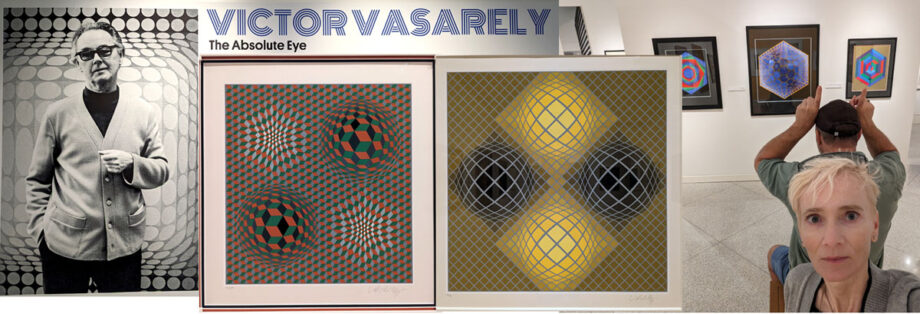
While Naples is an upscale beach town with little good art on display, Naples Art Institute surprises the locals with its newest exhibition, titled “Victor Vasarely: The Absolute Eye.” The retrospective exhibition displayed over 100 serigraphs, lithographs, gouache paintings, drawings and a few small sculptures.
Hungarian-French artist, Victor Vasarely (1906-1997) is the leader of the Op Art (optokinetic art) movement, and his innovations in color perception and optical illusion had influenced numerous artists to come. Today his hand-pulled art prints sell for $4,000-30,000 a piece. Vasarely was 90 years old when he died in Paris, France.
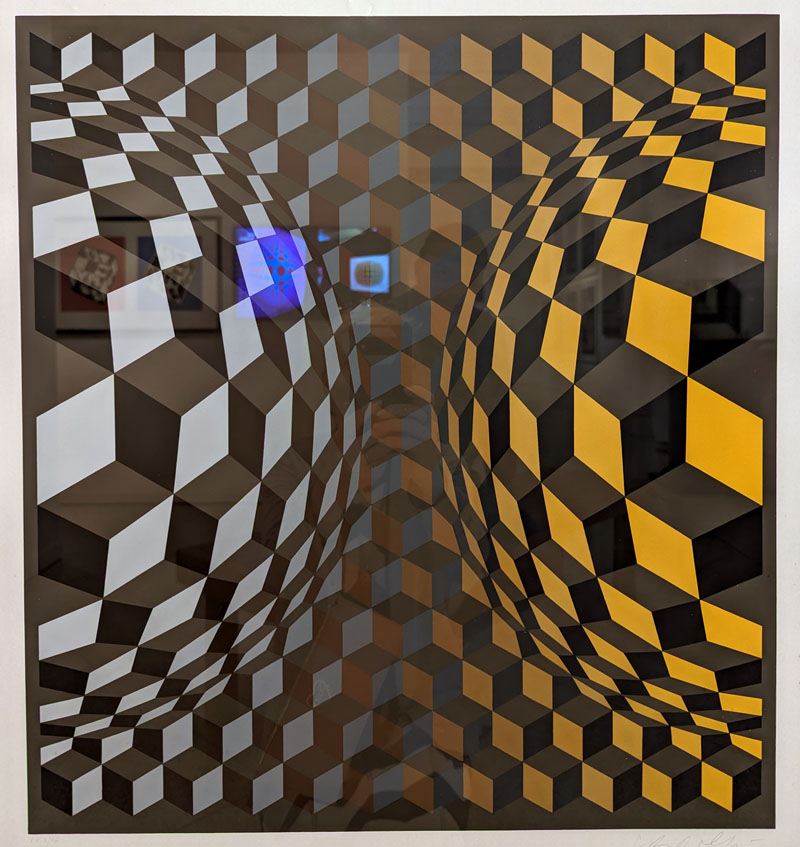
Better known as OP Art, Optokinetic art movement relies on mathematical principles to construct repetitive abstract shapes, stripes, grids or spirals to catch the involuntary eye movements we make when following moving patterns. In other worlds, this art stimulates the optokinetic response in us. Op Art takes this response as the basis to visually trick us but normally explores a wider artistic vision and techniques in art.
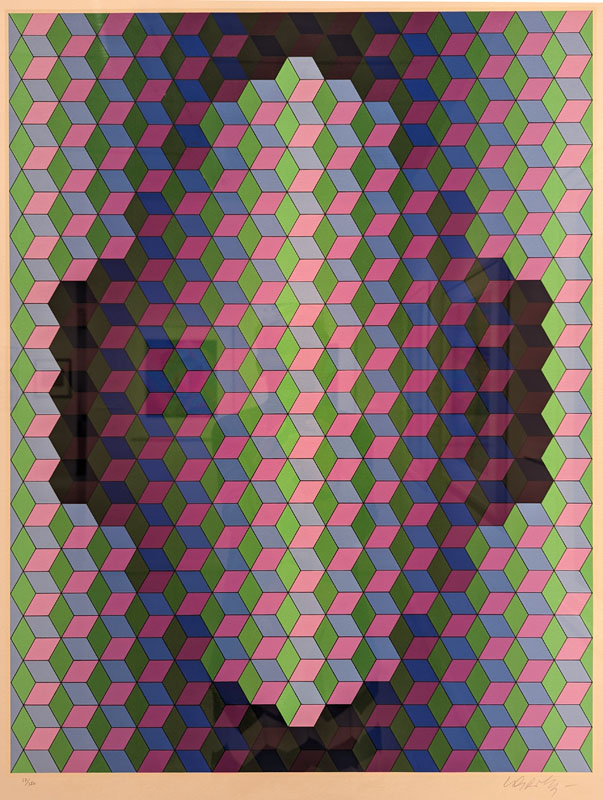
5 Facts about Victor Vasarely and his Op Art:
1. From Medicine to Mastermind
Before becoming the father of Op Art, Vasarely actually pursued a career in medicine! He switched paths mid-study, drawn to the power of visual communication. Later, he studied graphic design at the private Műhely School in Budapest and in 1930, he moved to Paris to work in advertising and design.
“Vasarely’s early geometric abstract research was inspired by purely abstract elements in nature and urban spaces. In 1947 he spent the summer on a small island off the coast of Brittany, called Belle-Île-en- Mer. He observed the polished stones in the sand, examined the prismatic behavior of the sea, as well as the refraction and reflection of light, the effect of creating space by shifting the viewer’s point of vision on a flat surface and the contrast of light and shadow that generates a vibration in the sight. This would mark the beginning of a true abstract approach for Vasarely. Although he later referred to this time in his life as “the wrong path,” it resulted in an important evolution in his work. It added more rounded elements to his paintings. When he returned to his previous geometric style, it was with the inclusion of dynamic rounded forms that seemed to bulge outward from the painting or collapse inward from the surface. These forms tricked the eye into experiencing that the image was moving. That kinetic illusion, combined with the three-dimensionality of the images on Vasarely’s canvases, became the foundation for the iconic aesthetic we now call Op Art.”
Naples Art Institute
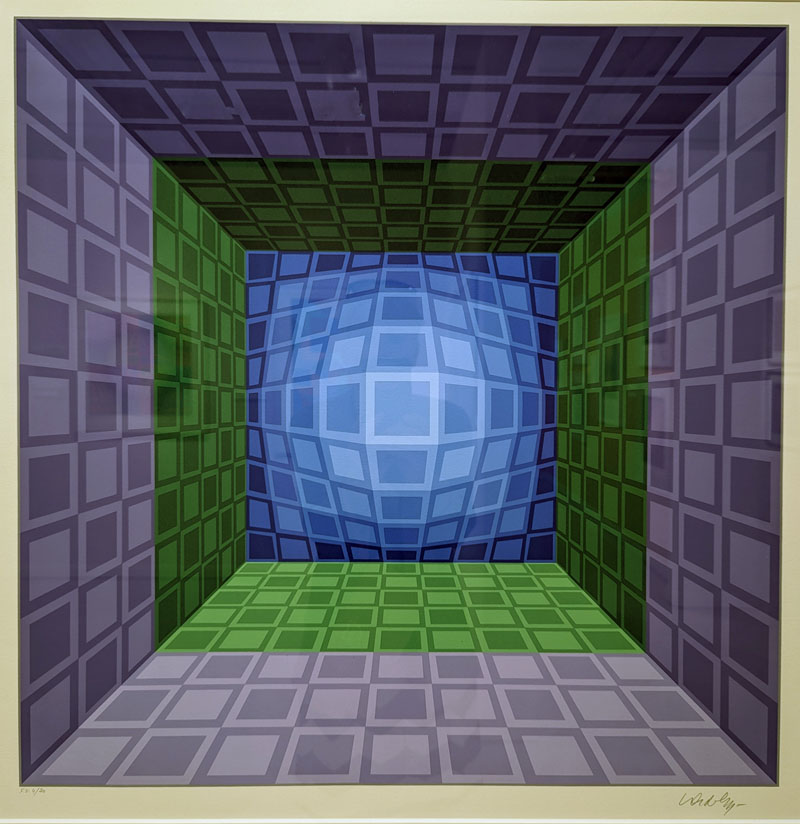
‘The extreme variety of its form leads the advertising designer to mute his personality.’
Victor Vasarely
2. Architect of 3-D Perception
Vasarely didn’t just paint illusions; he aimed to engineer them. His works use geometry, repetition, and color play to manipulate how viewers perceive depth, movement, and even color itself. Thanks to his jobs in advertising and graphic design the artist learned enough about human psychology to understand how we process visual information.
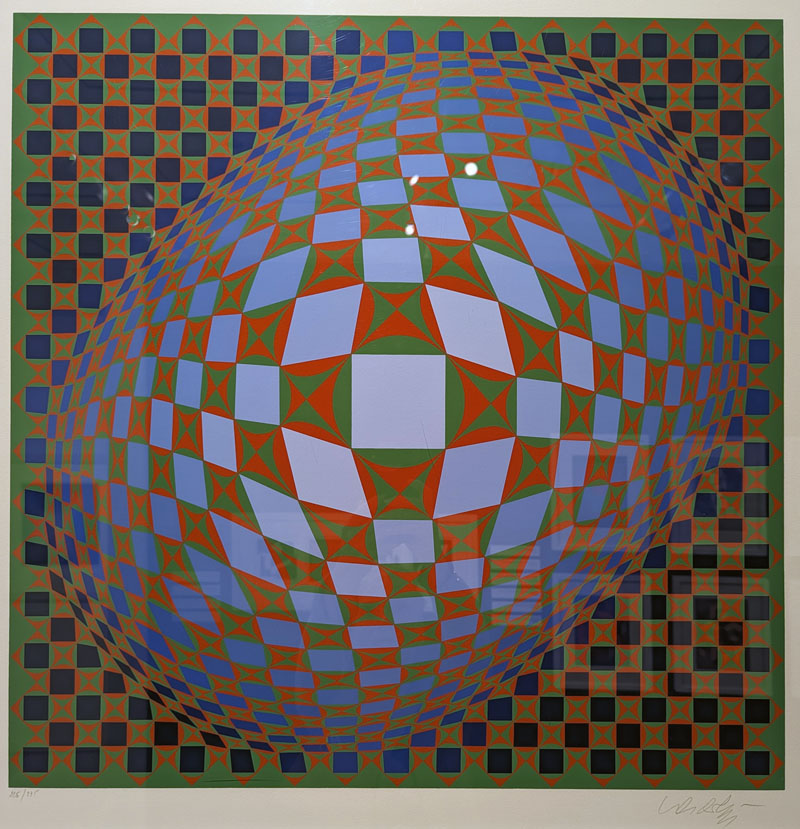
“Our eyes are subjected to a constant flood of visual stimuli. In order to process and interpret them, the subconscious brain compares the images with memories and experiences. That’s what distinguishes personal perception from the actual physiological image. Large objects in the foreground, small objects in the back and lines converging at a vanishing point. As soon as the eye receives signals like these, it perceives even a two-dimensional image as spatial. That is why artists usually use so-called central perspective for their naturalistic depictions – not least of all in pictorial representations of cities. They work with lines that converge as they recede into the depths of space, just as they seem to do in the perception of reality. Vasarely, for his part, made frequent use of axonometric projection a geometrical method of constructing three-dimensional forms. The parallel side lines are drawn tipped over to one side at equal angles. This has a bewildering effect on visual perception: does the picture really depict a three-dimensional object?”
Naples Art Institute
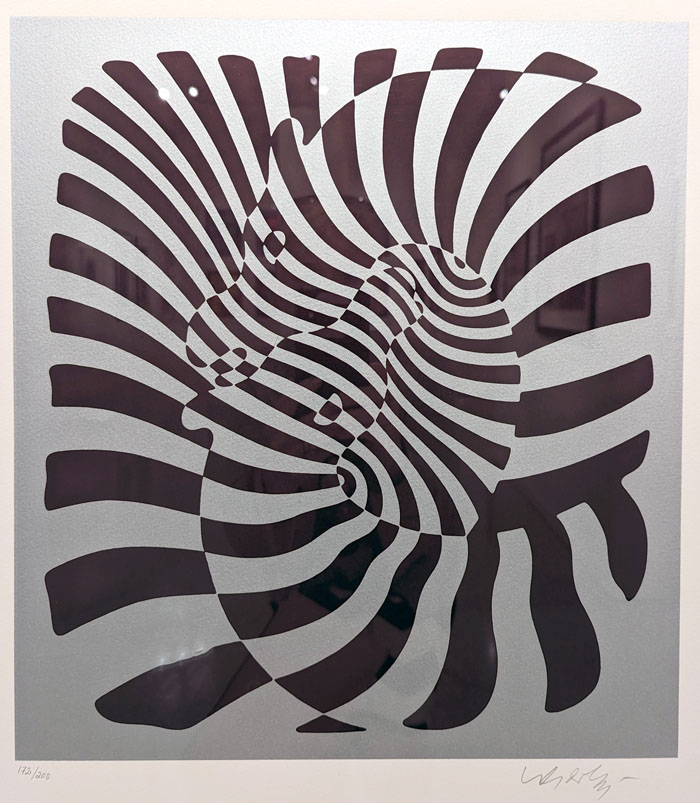
3. Op Art for Everyone
Unlike much avant-garde art, Vasarely believed in democratizing art experiences. He embraced public art commissions and architectural integrations, bringing Op Art to everyday spaces like buildings and metro stations. Influenced by the Futurists, Constructivists and Dadaists, Op Art spread all over Europe and came to the US in the 60s.
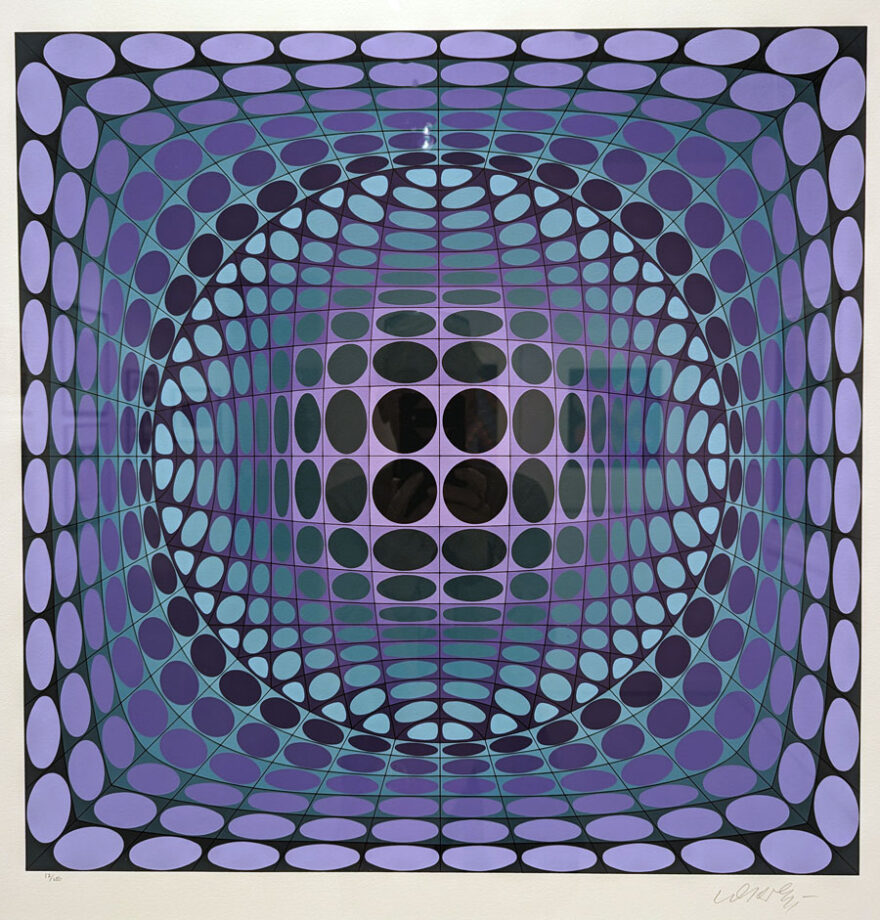
Vega Structures
“Vega Structures is one of the best-known and most emblematic series produced by Vasarely at the height of his career named after the brightest star in the northern hemisphere’s summer night sky. Inspired by contemporary news reports about mysterious signals received from distant galaxies, Vasarely named many of his works after stars and constellations. The Vega pictures rely on convex- concave distortions of a grid-like network, a sophisticated combination of the cube and the sphere, symbolically referring to the two-way motion of the light that emanates from pulsating stars, and to the functioning of condensing galaxies and the expanding universe.
Through works such as “Vega-Fel-VR” (1971) and “Trivega” (1981), Serigraphs, the artist seeks to evoke the elusive universe of the galaxies, the cosmic pulsations and the biological mutation of the cell. The common denominator in these works is Vasarely’s realization that two dimensions can be expanded into three simply by deforming the basic grid, and that, depending on the degree of enlargement or reduction, the elements in the deformed grid can be transformed into rhombuses or ellipses.”
Naples Art Institute
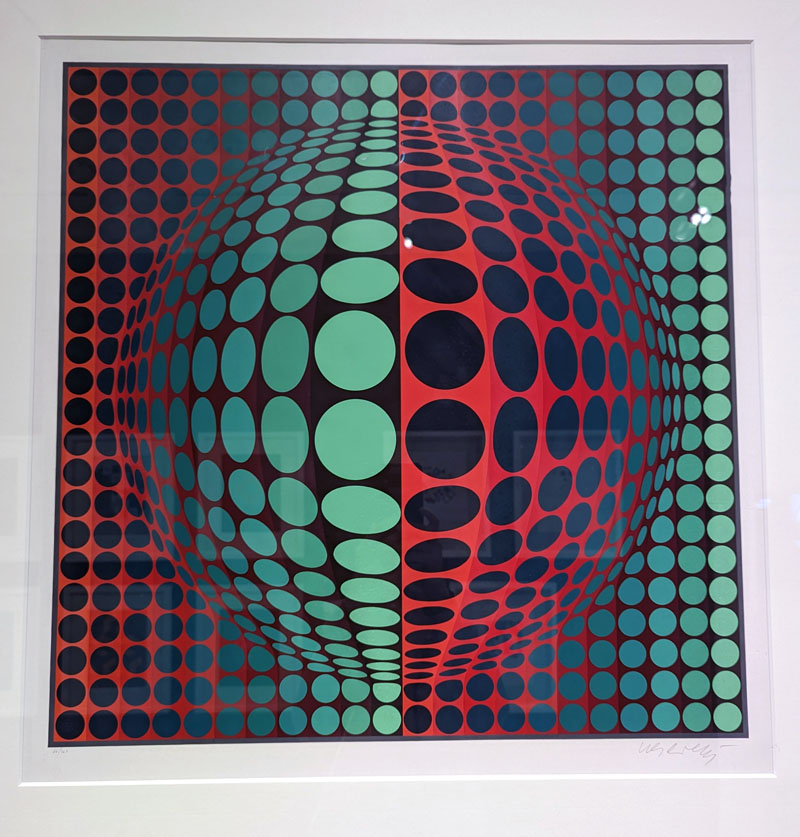
4. More Than Meets the Eye
Vasarely saw his art as a bridge between science and art. He incorporated mathematical principles and studied perceptual psychology to achieve the dynamic, almost psychedelic optical effects in his Op Art.
In 1955, Victor Vasarely published his thoughts about Op Art in the Yellow Manifesto. In his writing, the artist recorded his ideas that he called Kineticism. He believed that art should be based on scientific principles to create a sense of movement, energy, depth expressed in geometric forms and optical illusions, rather than copying nature.
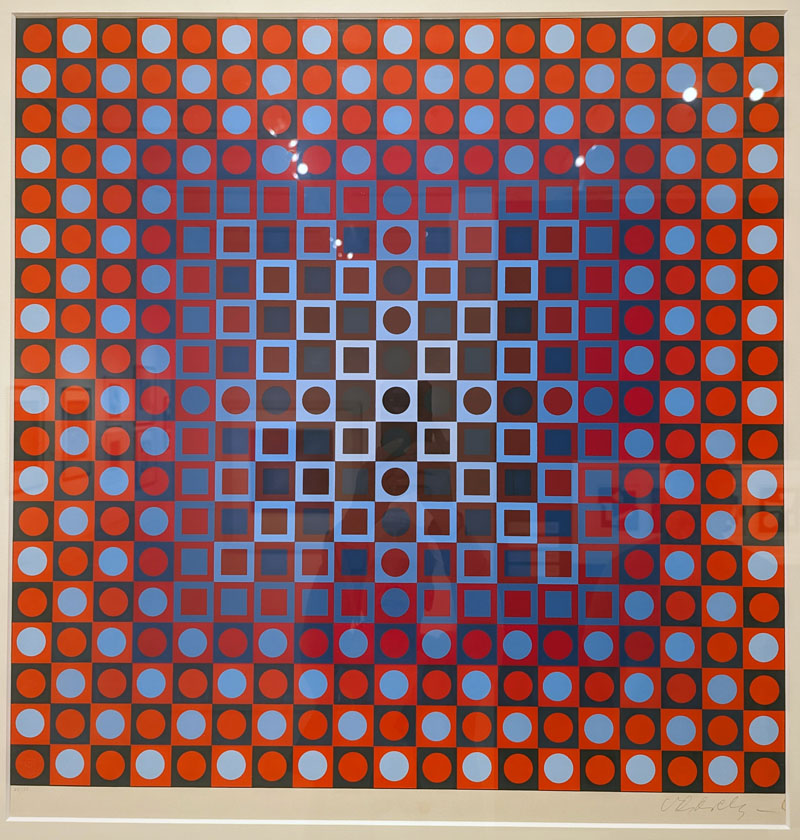
5. Beyond Canvas
Op Art wasn’t just about grid-like paintings. According to Tate, Vasarely experimented with various mediums, including sculptures, tapestries, and even architectural facades, creating illusory, flickering effects of depth, perspective, and motion. There are a few small sculptures presented at the show illustrating his interest in other materials and techniques.
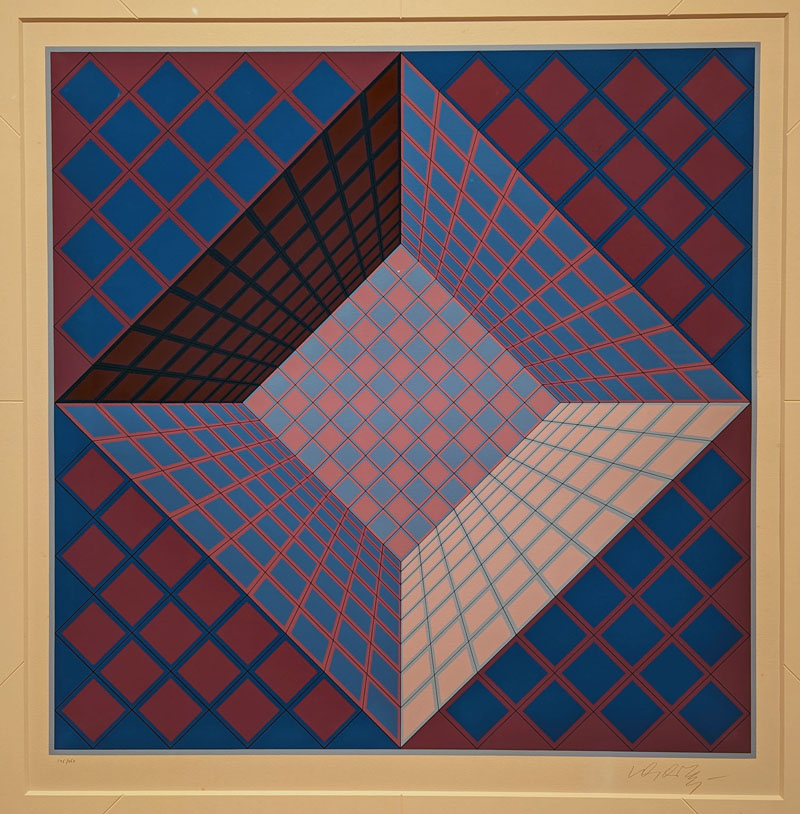
What is a serigraph?
In the ” Absolute Eye” the majority of art we see are vibrant serigraphs produced by the artist. A serigraph is a a stencil-based printing process normally called the silkscreen printing. Warhol is the most famous modern artist who used this printing method to create his art. Roy Lichtenstein comes in second.
- Stencils: A separate stencil is created for each color used in the artwork. These stencils typically use a photo-sensitive emulsion on a fine mesh screen (originally silk, now often polyester or nylon). Areas left open on the stencil will allow ink to pass through moving it with a squeegee.
- Layering Ink: Each stencil is placed on a frame and ink is pushed through the open areas onto the substrate (usually paper, but other materials can be used too). This process is repeated for each color, building up the image layer by layer, resulting in thick, vivid colors to complete the image. Each layer must align and print perfectly to create a finished artwork, which requires some skill and patience from the artist. The high-quality inks produce rich textures and colors.
- Hand-Crafted Touch: While automated machines exist, silkscreens are usually made as limited editions because each layer is hand-pulled, each stencil is hand-made, and each full-color serigraph is numbered and signed by the artist. Therefore, such prints are limited editions by nature and have the appeal to art collectors. Subject wise, this latest form of printmaking is the easiest to learn and doesn’t usually have the refinement of image like lithography or intaglio do.
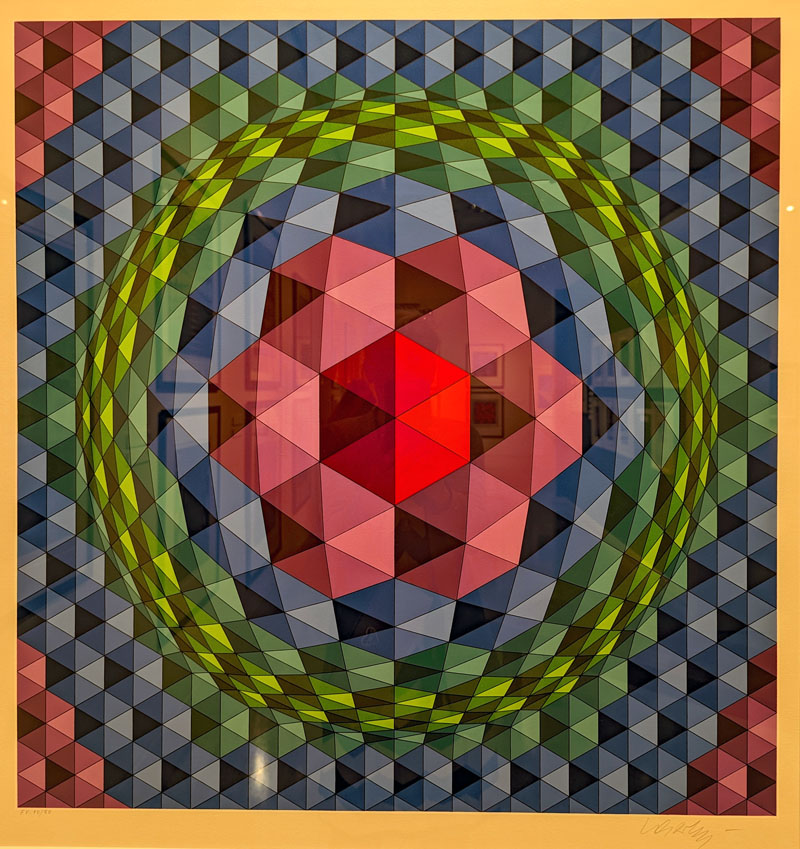
After walking through the exhibition and getting to know the artist, I was impressed with Victor Vasarely’s ability and mathematical precision to draft geometric forms – this is something I find very difficult to do in my art. As I’ve done silkscreen and other printmaking methods, I can appreciate the artist’s attention to detail and precision with which he worked to produce his op art prints.
More importantly, his thorough understanding of geometry and mathematical perspective led him to discover his own ideal of beauty comprising the Universe. Instead of copying visual cues from Nature like trees or birds, the artist studied nature to see the underlying structure of everything living. While Op Art or geometric abstraction is not my favorite art movement, I can see how it can play its role in other artists painting including mine.
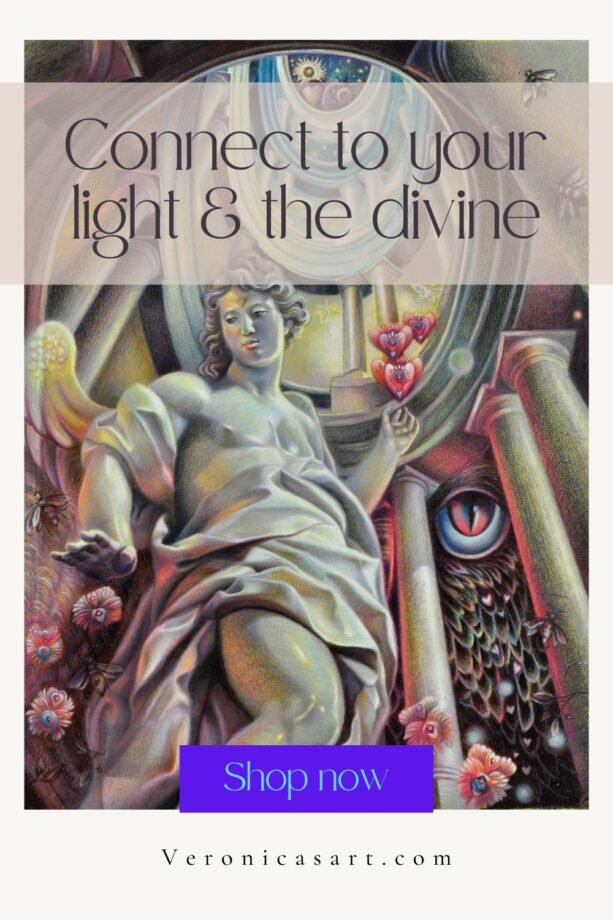
Sources:
Naples Art Institute, The Absolute Eye, retrospective art exhibition, January 2024, Naples, FL.
The Art Story, Britannica, My Art Broker, Tate